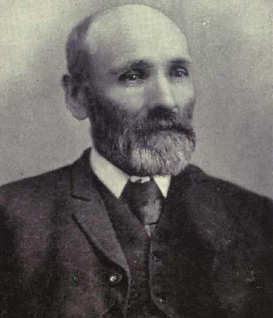History Of Oshawa

Historians believe that the area that would become Oshawa began as a transfer point for the fur trade. Beaver and other animals trapped for their pelts by local natives were traded with the Coureurs des bois (voyagers). Furs were loaded onto canoes by the Mississauga Natives at the Oshawa harbour and transported to the trading posts located to the west at the mouth of the Credit River. Around 1760, the French constructed a trading post near the harbour location this was abandoned after a few years, but its ruins provided shelter for the first residents of what later became Oshawa. Most notably, one of the fur traders was Moody Farewell, an early resident of the community who was to some extent responsible for its name change.
In the late 18th century a local resident, Roger Conant, started an export business shipping salmon to the United States. His success attracted further migration into the region. A large number of the founding immigrants were United Empire Loyalists, who left the United States to live under British rule. Later, Irish and then French Canadian immigration increased as did industrialization. Oshawa and the surrounding Ontario County were also the settling grounds of a disproportionate number of 19th century Cornish immigrants during the Cornish emigration which emptied large tracts of that part of England. As well, the surveys ordered by Governor John Graves Simcoe, and the subsequent land grants, helped populate the area. When Col. Asa Danforth laid out his York-to-Kingston road, it passed through what would later become Oshawa.
In 1822, a "colonization road" (a north–south road to facilitate settlement) known as Simcoe Street was constructed. It more or less followed the path of an old native trail known as the Nonquon Road, and ran from the harbour to the area of Lake Scugog. This intersected the "Kingston Road" at what would become Oshawa's "Four Corners." In 1836, Edward Skae relocated his general store approximately 800 m east to the southeast corner of this intersection; as his store became a popular meeting place (probably because it also served as the Post Office), the corner and the growing settlement that surrounded it, were known as Skae's Corners. In 1842, Skae, the postmaster, applied for official post office status, but was informed the community needed a better name. Moody Farewell was requested to ask his native acquaintances what they called the area; their reply was "Oshawa," which translates to "where we must leave our canoes". Thus, the name of Oshawa, one of the primary "motor cities" of Canada, has the meaning "where we have to get out and walk" The name "Oshawa" was adopted and the post office named accordingly. In 1849, the requirements for incorporation were eased, and Oshawa was incorporated as a village in 1850.
Oshawa Factories, 1910

The 1846 Gazeteer indicates a population of about 1,000 in a community surrounded by farms. There were three churches, a post office, tradesmen of various types and some industry a foundry, a grist mill and a fulling mill, a brewery two distilleries, a machine shop and four cabinet makers.
The newly established village became an industrial centre, and implement works, tanneries, asheries and wagon factories opened (and often closed shortly after, as economic "panics" occurred regularly). In 1878, Robert Samuel McLaughlin, Sr. moved his carriage works to Oshawa from Enniskillen to take advantage of its harbour and of the availability of a rail link not too far away. He constructed a two-story building on Simcoe Street, just north of the King's Highway. This building was heavily remodelled in 1929, receiving a new facade and being extended to the north using land where the city's gaol (jail, firehall And townhall) had once stood. The village became a town in 1879, in what was then called East Whitby Township. Around 1890, the carriage works relocated from its Simcoe Street address to an unused furniture factory a couple of blocks to the northeast, and this remained its site until the building burned down in 1899. Offered assistance by the town, McLaughlin chose to stay in Oshawa, building a new factory across Mary Street from the old site. Rail service had been provided in 1890 by the Oshawa Railway this was originally set up as a streetcar line, but c. 1910 a second "freight line" was built slightly to the east of Simcoe Street.[17] This electric line provided streetcar and freight service, connected central Oshawa with the Grand Trunk (now Canadian National) Railway, and with the Canadian Northern (which ran through the very north of Oshawa) and the Canadian Pacific, built in 1912–13. The Oshawa Railway was acquired by the Grand Trunk operation around 1910, and streetcar service was replaced by buses in 1940. After GM moved its main plants to south Oshawa in 1951, freight traffic fell and most of the tracks were removed in 1963, although a line to the older remaining "north" plant via Ritson Road remained until 2000.
Oshawa Downtown

Downtown Oshawa is identified as an Urban Growth Centre in the Government of Ontario's Places to Grow initiative. More than 5,000 people work and more than 2,400 university students study in the downtown core. The downtown is a prominent centre for entertainment and sporting events (Regent Theatre and Tribute Communities Centre), food (50+ restaurants and cafes) and culture (The Robert McLaughlin Gallery and Canadian Automotive Museum). Oshawa is home to a Regional Innovation Centre and offers start-up facilities for entrepreneurs and small businesses. Co-working offices are also located in the downtown.
For more information please visit - Wikipedia Page









